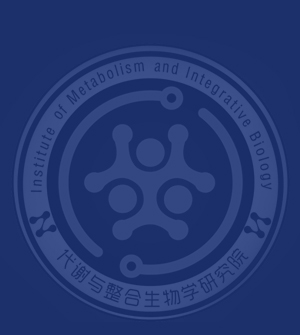

 Tel: 0086-21-31242085
Tel: 0086-21-31242085
Email: lulei@fudan.edu.cn
Office Address: Room D7013, Interdisciplinary Building No.2, Fudan University
Personal Profile
Lei obtained a bachelor's degree in biotechnology from Nanjing University in 2008, he received a doctorate in biology from Nanjing University in 2015. From 2016 to 2018, he was engaged in postdoctoral research in the Obstetrics and Gynecology Hospital of Fudan University. In July 2018, he joined the IMIB of Fudan University as a young associate researcher.
Research Interests
Lu Lei's expertise is to establish and use multiple model animal models to study the molecular mechanism of early embryonic development and the pathogenic mechanism of birth defects in early human embryos. Current specific research interests include:
Using the African clawed frog as a model animal, screen a class of important epigenetic regulatory factors-histone lysine demethylase family proteins, and participate in the regulation of core signaling pathways during early embryo development.
Using CRISPR / Cas9 technology combined with haploid embryonic stem cell technology, quickly establish a single gene mutation and multi-gene mutation mouse model that simulates human neural tube defects. The use of mouse models enables efficient screening of the pathogenicity of human-derived gene mutations, and further elucidates its pathogenic mechanism.
Honors and Awards
2017 Outstanding Paper Award of the 16th Chinese Medical Association Medical Genetics Conference
2015 Nanjing University Outstanding Graduates (PhD) (Top 10%)
Selected Publications
Lei Lu#, Yan Gao#, Zan Zhang, Qing Cao, Xuena Zhang, Jianghuan Zou, Ying Cao*. Kdm2a/b Lysine Demethylases Regulate Canonical Wnt Signaling by Modulating the Stability of Nuclear β-Catenin. Developmental Cell, 2015, 33(6): 660-674.
Gao YQ#, Chen Xin#, Wang Pei, Lu Lei, Zhao Wei, Chen Chen, Chen CP, Tao Tao, Sun Jie, Zheng YY, Du Jie, Li CJ, Gan ZJ, Gao Xiang, Chen HQ, Zhu MS*. Regulation of DLK1 by the maternally expressed miR-379/miR-544 cluster may underlie callipyge polar overdominance inheritance. PNAS, 2015, 44: 13627-13632.
Cao Qing#, Zhang XN#, Lu Lei, Yang LN, Gao JM, Gao Yan, Ma HH, Cao Ying*. Klf4 is required forgerm-layer differentiation and body axis patterning during Xenopus embryogenesis. Development, 2012, 139: 3950-3961.
Li Qing#, Li Yanjing#, Yang Sunming, Huang Shuo, Yan Meng, Ding Yifu, Tang Wei, Lou Xiwen, Yin Qi, Sun Zhanfei, Lu Lei, Shi Huijuan, Wang Hongyan, Chen Yong*, Li jinsong*. CRISPR-Cas9-mediated base-editing screening in mice identifies DND1 amino acids that are critical for primordial germ cell development. Nature Cell Biology, 2018, 20(11): 1315-1325.
Wang Xiukun#, Kang Junyan#, Wei Leixin#, Yang Xiaogan#, Sun Hongduo, Yang Sunming, Lu Lei, Yan Meng, Bai Meizhu, Chen Yanyan, Long Juanjuan, Li Na, Li Dangsheng, Huang Jing, Lei Ming, Shao Zhen, Yuan Wen, Zuo Erwei*, Lu Kehuan*, Liu Mofang*, Li Jinsong*. PHF7 is a novel histone H2A E3 ligase prior to histone-to-protamine exchange during spermiogenesis. Development, 2019, 146(7): 1-11.



 Fudan Email
Fudan Email Fudan Ehall
Fudan Ehall